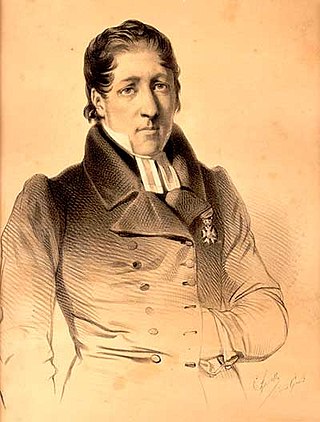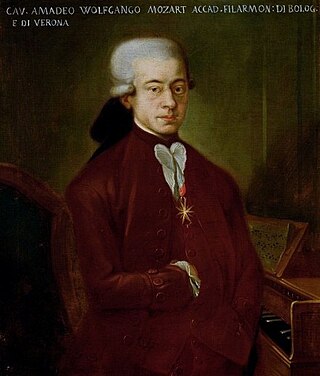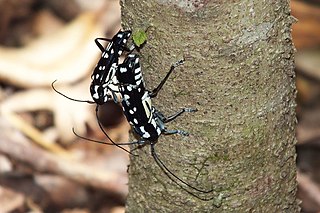
Alexander was King of Greece from 11 June 1917 until his death on 25 October 1920.

Mrs. Parkington is a 1944 drama film. It tells the story of a woman's life, told via flashbacks, from boarding house maid to society matron. The movie was adapted by Polly James and Robert Thoeren from the novel by Louis Bromfield. It was directed by Tay Garnett and starred Greer Garson and Walter Pidgeon appearing together as husband and wife for the fourth time.

Aspasia was a metic woman in Classical Athens. Born in Miletus, she moved to Athens and began a relationship with the statesman Pericles, with whom she had a son named Pericles the Younger. According to the traditional historical narrative, she worked as a courtesan and was tried for asebeia (impiety), though modern scholars have questioned the factual basis for either of these claims, which both derive from ancient comedy. Though Aspasia is one of the best-attested women from the Greco-Roman world, and the most important woman in the history of fifth-century Athens, almost nothing is certain about her life.

Alexandra was the last Queen of Yugoslavia as the wife of King Peter II.

Aspasia Manou was a Greek aristocrat who became the wife of Alexander I, King of Greece. Due to the controversy over her marriage, she was styled Madame Manou instead of "Queen Aspasia", until recognized as Princess Aspasia of Greece and Denmark after Alexander's death and the restoration of King Constantine I, on 10 September 1922. Through her marriage, she and her descendants were the only ethnically Greek members of the Greek royal family, which originated in Denmark.

Lars Levi Laestadius was a Swedish Sami writer, ecologist, mythologist, and ethnographer as well as a pastor and administrator of the Swedish state Lutheran church in Lapland who founded the Laestadian pietist revival movement to help his largely Sami congregations, who were being ravaged by alcoholism. Laestadius himself became a teetotaller in the 1840s, when he began successfully talking his Sami parishioners out of alcoholism. Laestadius was also a noted botanist and an author.
The Menexenus is a Socratic dialogue of Plato, traditionally included in the seventh tetralogy along with the Greater and Lesser Hippias and the Ion. The speakers are Socrates and Menexenus, who is not to be confused with Socrates' son Menexenus. The Menexenus of Plato's dialogue appears also in the Lysis, where he is identified as the "son of Demophon", as well as the Phaedo.

409 Aspasia is a large main-belt asteroid that was discovered by French astronomer Auguste Charlois on 9 December 1895 in Nice. It is classified as a CX-type asteroid.
Odontoglossum, first named in 1816 by Karl Sigismund Kunth, is a formerly accepted genus of orchids that is now regarded as a synonym of Oncidium. Several hundred species have previously been placed in Odontoglossum. The scientific name of the genus is derived from the Greek words odon (tooth) and glossa (tongue), referring to the two tooth-like calluses on the base of the lip. Species formerly placed in this genus are cool to cold growing orchids to be found on open spots in the humid cloud forest at higher elevations from Central- and West South America to Guyana, with most species around the northern Andes. The abbreviation for this genus is Odm. in the horticultural trade. Many of the species formerly placed in the genus are in great demand with orchid lovers because of their spectacular and flamboyant flowers.

Glenealy is one of the few roads or streets without a suffix in Hong Kong. Located in the Mid-Levels on the Hong Kong Island, Hong Kong, it starts from Ice House Street and goes uphill to Hong Kong Zoological and Botanical Gardens, across Robinson Road and ends at Hornsey Road and Conduit Road.

Mitridate, re di Ponto, K. 87 (74a), is an opera seria in three acts by the young Wolfgang Amadeus Mozart. The libretto is by Vittorio Amedeo Cigna-Santi, after Giuseppe Parini's Italian translation of Jean Racine's play Mithridate.

Parantica aspasia, the yellow glassy tiger, is a butterfly found in Asia that belongs to the crows and tigers, that is, the danaid group of the brush-footed butterflies family.

Glenealy is a village in County Wicklow, Ireland. It is 8 km (5 mi) west of Wicklow Town, on the R752 road. The Dublin–Rosslare railway line also passes through the village. The village is in a civil parish of the same name.
Aspasia was an Athenian woman and a friend of Pericles.

Aspasia, abbreviated as Asp. in the horticultural trade, is a genus of 7 species of orchids occurring from southern Mexico to southern Brazil. The genus is closely related to Miltonia and Brassia. Aspasia species have few medium size flowers of exquisite colors which are occasionally cultivated or used to produce artificial hybrids.
Glenealy Hurling Club is a Gaelic Athletic Association club located in the parish of Glenealy and Ashford in County Wicklow, Ireland. The club was founded in 1885 as a football club but switched codes to the game of hurling in the early 1920s.

Cepora aspasia is a butterfly in the family Pieridae, found in Indonesia.

Glenea is a genus of longhorn beetles belonging to the family Cerambycidae, subfamily Lamiinae.

Glenea venus is a species of beetle in the family Cerambycidae. It was described by James Thomson in 1865. It is known from Papua New Guinea, Australia and Indonesia.














